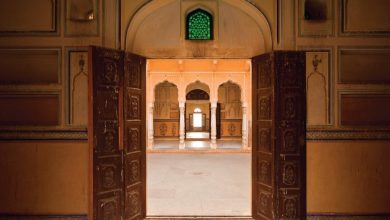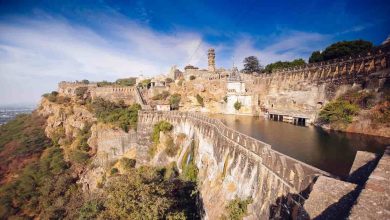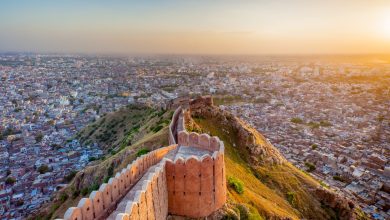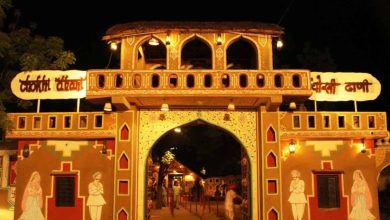If you’re heading to Jaipur, make sure to add Jantar Mantar to your list of places to visit! This iconic monument is a must-see for any first-time visitor to the city. Jantar Mantar is a grandiose astronomical observatory dating back to the 18th century. It’s home to some of the most impressive historical architecture in Jaipur and is a great place to learn about the city’s rich history.
Not only that, but Jantar Mantar is also a great spot for some prime people-watching. So be sure to stroll around and take it all in!
[treebo_visual_elements header=”Book Budget Hotels in Jaipur” city=”Jaipur”]
Jantar Mantar: An Introduction
Jantar Mantar is one of the most fascinating places to visit in the Pink City – Jaipur. Built in 1724 by Maharaja Jai Singh II, this astronomical observatory is a UNESCO World Heritage Site. It is the largest of five observatories built by Jai Singh II and is home to some of the most impressive astronomical instruments in the world. These instruments are still in use and are open to the public for viewing.
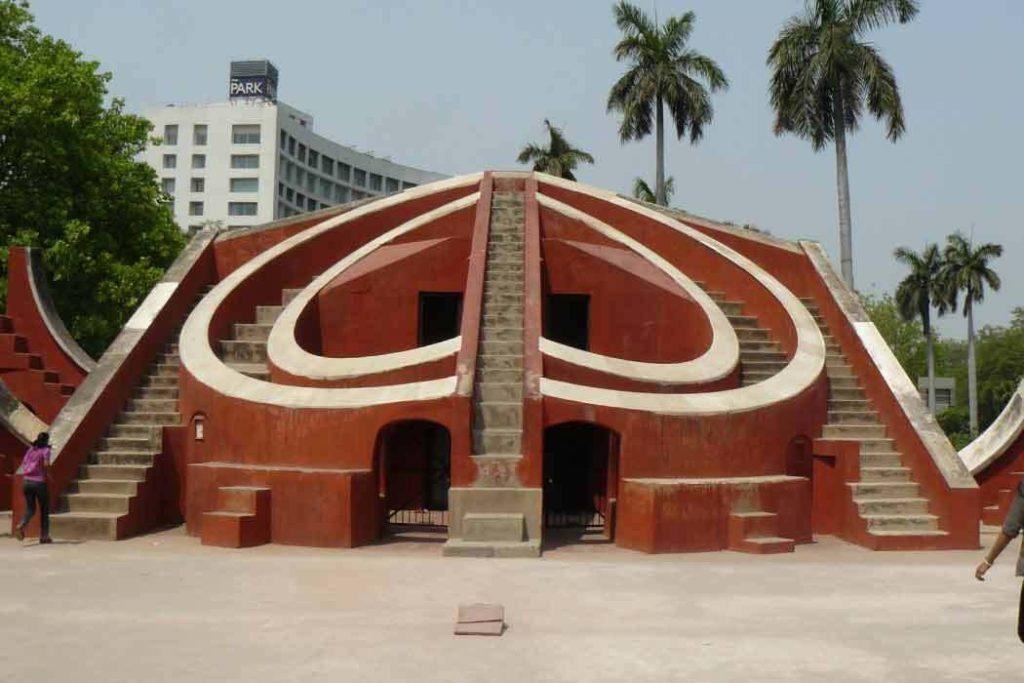
A visit to Jantar Mantar is a must for any history or astronomy buff. But even if those subjects don’t interest you, the beautiful architecture and incredible stories behind each instrument make it well worth a visit!
The History of Jantar Mantar
The history of Jantar Mantar is as fascinating as the monument itself! Commissioned by Maharaja Jai Singh II in 1724, Jantar Mantar was meant to be an astronomical observation site. The name ‘Jantar Mantar’ is derived from the Sanskrit words ‘Jyotish’ (astronomy) and ‘mantra’ (formula or calculation). The monument consists of 19 architectural elements, each with a specific purpose.
Significance
The significance of the Jantar Mantar lies in its astronomical instruments, which are still in use today. These instruments are used to observe the movement of celestial objects and to calculate the time and direction of prayers.
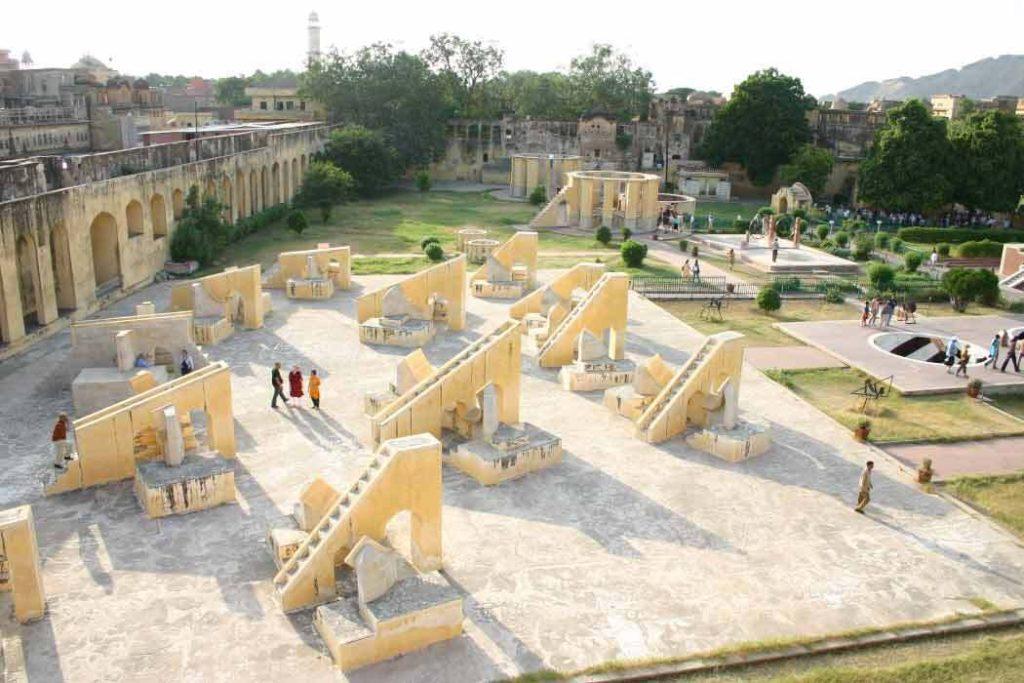
Located in the heart of the city, Jantar Mantar is one of Jaipur’s most popular tourist destinations. It is an open-air observatory that was built in 1724.
The Architecture of Jantar Mantar – If you’re visiting Jaipur in 2022, a stop at Jantar Mantar is a must! This Unesco World Heritage Site is one of the largest collections of astronomical instruments in the world, and its awe-inspiring architecture is sure to leave you spellbound.
The main attraction is the Samrat Yantra, a giant sundial that’s still used to calculate time to this day. But be sure to explore the rest of the complex too—each imposing structure has a story to tell. So make sure to put Jantar Mantar on your list of things to see in Jaipur, and enjoy an afternoon of learning and marveling at India’s incredible history!
Instruments
So, what exactly is Jantar Mantar? In short, it’s an observatory. However, unlike most modern-day observatories, Jantar Mantar doesn’t use telescopes or other electronic equipment. Instead, it relies on a collection of unique and elaborate instruments that were specifically designed to measure astronomical objects and phenomena.
Some of the most famous instruments at Jantar Mantar include the Samrat Yantra (a sundial that can tell the time of day to within 2 seconds), the Rashi Yantra (a giant zodiac chart), and the Panch Pyala (a device used to calculate altitudes). If you’re interested in learning more about these instruments, or in simply seeing them up close, be sure to visit this majestic monument on your next trip to Jaipur!
Jantar Mantar Today
As you walk around the sprawling complex of Jantar Mantar today, it’s hard to imagine that this UNESCO World Heritage Site was once used for such a specific and singular purpose. But that’s exactly what makes it so interesting! Each of the buildings here has a unique and fascinating history that’s worth exploring.

So make sure to allot some time to wander around and take it all in. You’ll be able to see everything from the world’s largest sundial to an observatory that can predict the weather up to 16 days in advance! And don’t forget to enjoy the peace and tranquility of this historic spot.
Places To Visit Near Jantar Mantar
There are other popular tourist destinations available nearby and we have enlisted a few here below. Make sure you book your Hotels in Jaipur in advance. You can check out our recommendations here Hotels Near Jantar Mantar
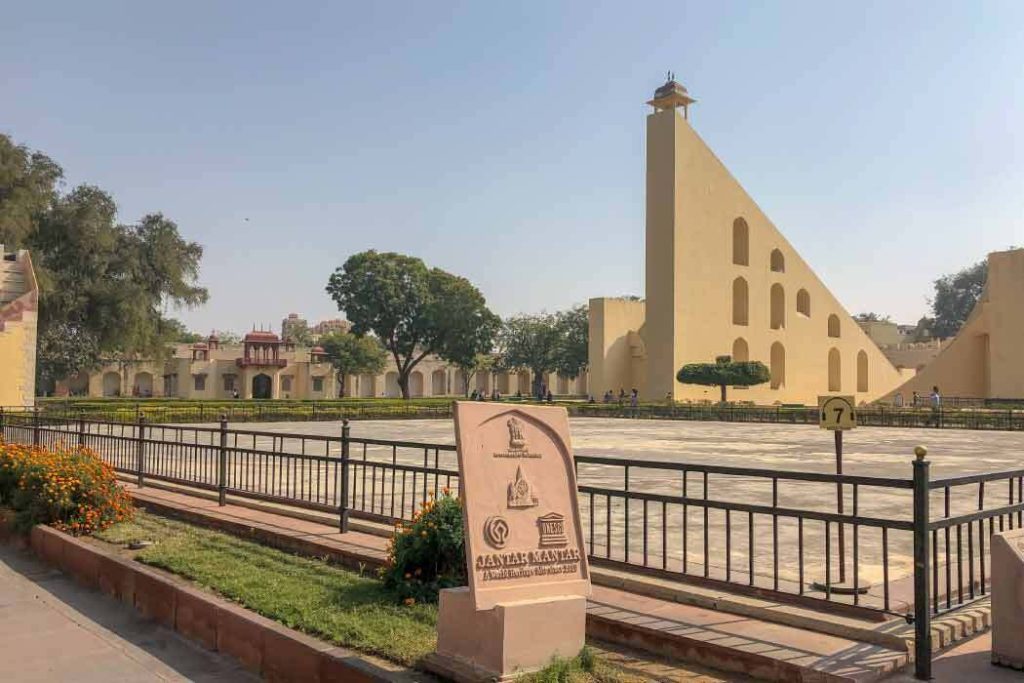
- City Palace Jaipur: Who doesn’t want to see this? After all, it’s not a place, but a definition of beauty itself.
- Hawa Palace: The Palace of Breeze – A must Visit spot.
- Chandra Mahal: Another historical epitome built by Maharaja Jai Singh.
- Kalki Mandir : For a religious soul, Experience the unbelievable stories of Kalki Avtar of Lord Vishnu.
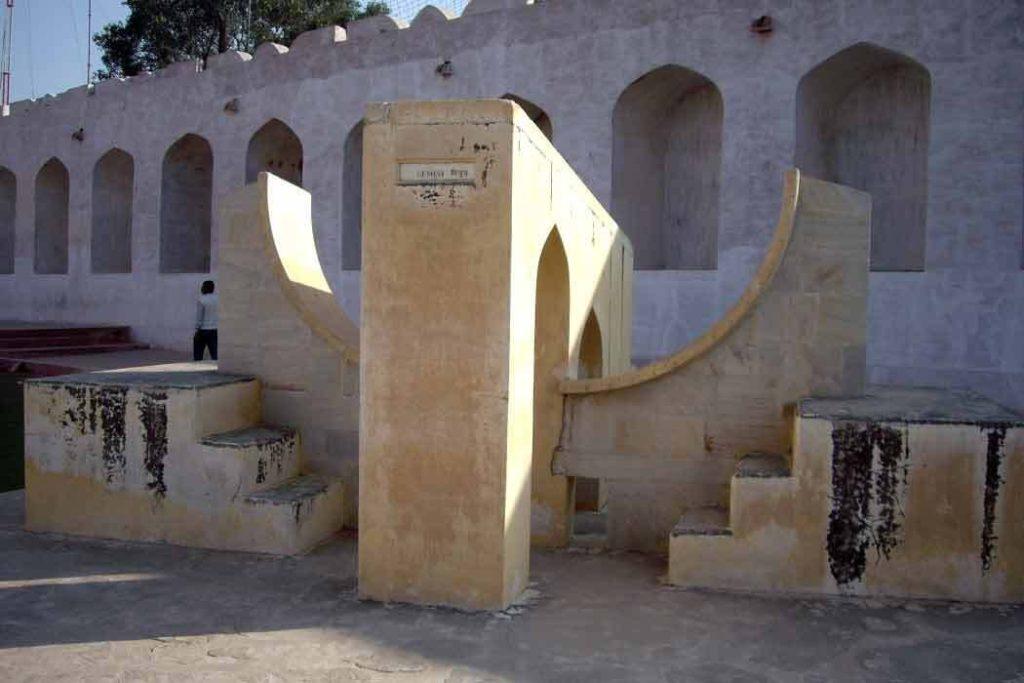
So make sure to allot some time to wander around and take it all in. You’ll be able to see everything from the world’s largest sundial to an observatory that can predict the weather up to 16 days in advance! And don’t forget to enjoy the peace and tranquility of this historic spot.
Conclusion
If you’re coming to Jaipur anytime soon, make sure to add this magical monument to your list of places to visit. This iconic monument is a great place to learn about India’s history and culture, and there’s no shortage of hotels in Jaipur if you want to make a day of it. For a memorable experience, make sure you visit on a sunny day as most of the equipment is based on Sun’s position. A guide will be your best friend if you wish to learn how each fascinating instrument works.
While in the Pink city, make time to visit the other historical sites in Jaipur that tell the story of the city’s rich history and heritage.
We hope you’ve found this guide helpful. Happy travels!
FAQs
Q: What number of Jantar Mantar are there?
A: In the mid-eighteenth hundred years, Maharaja Jai Singh II of Jaipur built five Jantar Mantar altogether, in New Delhi, Jaipur, Ujjain, Mathura, and Varanasi; they were finished somewhere in the range between 1724 and 1735.
Q: What are some of the interesting things that a first-timer should not miss when visiting Jantar Mantar?
A: The Air Sculpture which is an iron sculpture that shows the varying density of air and temperature, the Celestial Sphere which is a large sphere that gives a display of the night sky with the help of mirrors, the Scale Model of Solar System which is a scale model of the solar system and you can stand right in the center to view the planets, the Fountain which is a water fountain that shows the actual time, and the Stonehenge which is a set of large stones that predicts the sun or moon.
Q: Any recommendations for the best time to visit and the best place to stay in Jantar Mantar in Jaipur?
A: One of the best times to visit is from October to March. It is advised to keep checking the forecast and plan your trip accordingly. Talking about accommodation, you can stay nearby Jantar Mantar if you have planned way in advance.
An alternative is to have the Treebo Hotels check which can help you find one of the best hotels in Jaipur near Jantar Mantar, without having to worry about the costs.
Q: What kind of food is available around Jantar Mantar?
A: The food available is typical of the street food of Jaipur. It comprises Gol-Gappa, Pyaaz kachori, Kathi roll, and other snacks. The food is made fresh using quality ingredients, and is good enough to feed a hungry stomach!
